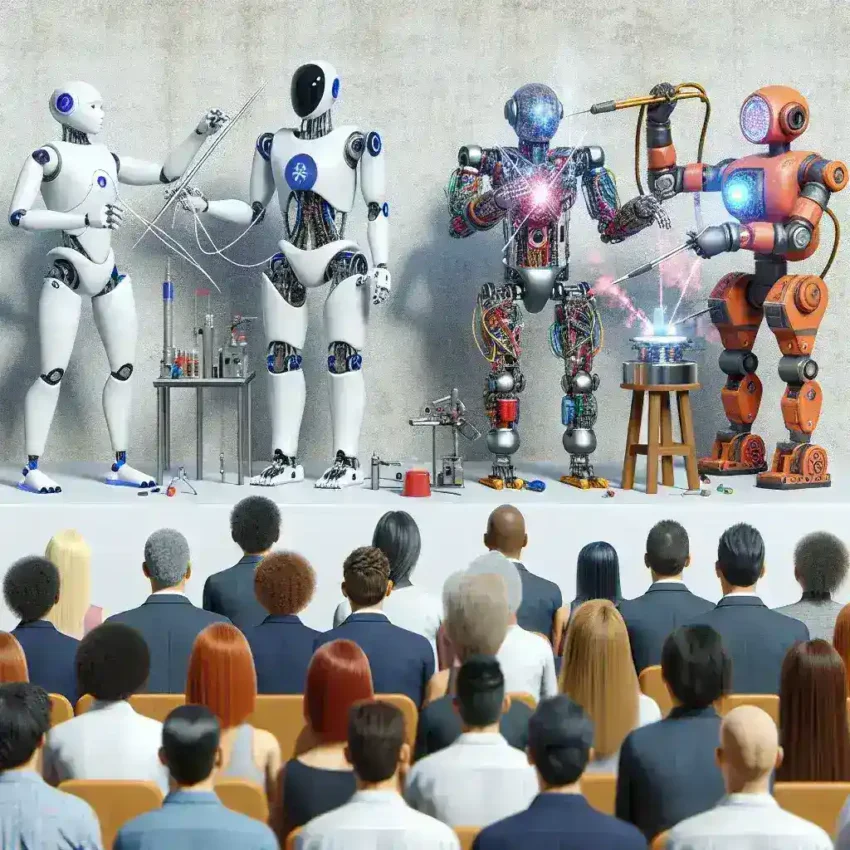Introduction
As automation continues to evolve, the ethical implications surrounding its implementation in industrial design have come to the forefront of discussions. One of the most significant debates centers on the balance between humanoid form and functionality. In the U.S., this discussion is not just theoretical; it impacts design decisions, consumer acceptance, and ultimately, the future of work and human-robot interaction.
Historical Context
The journey towards automation began in the early 20th century, with industrial robots first introduced in manufacturing processes. However, as technology advanced, the designs of these machines began to evolve. The 1990s saw the emergence of robots with anthropomorphic features, raising questions about the purpose and ethics of replicating human-like forms.
The Humanoid Form
Proponents of humanoid designs argue that these robots can foster better interactions with humans. They can be programmed to exhibit social cues and emotions, making them appear more relatable. This can enhance user experience, particularly in service industries such as healthcare, where emotional connection is vital.
- Benefits of Humanoid Robots:
- Improved user interaction and emotional engagement.
- Greater acceptance in fields requiring empathy, like healthcare.
- Potential to serve as companions for the elderly or disabled.
Functionality Over Form
Conversely, critics of humanoid robots argue that functionality should take precedence over form. In industrial settings, the main objective is efficiency and productivity. A robot designed purely for function can outperform a humanoid counterpart, especially in tasks requiring precision and speed.
- Advantages of Functional Design:
- Higher efficiency and performance in industrial tasks.
- Lower production costs due to simpler designs.
- Minimized maintenance and operational challenges.
Current Debates in Design
In the U.S., industrial design debates have sparked discussions about the implications of these design choices. Should designers prioritize creating machines that resemble humans, or should they focus on optimizing performance and capabilities?
Case Studies
Consider the case of Boston Dynamics, known for its advanced robotic designs, including both humanoid and functional robots like Spot. Spot, a quadrupedal robot, excels in tasks requiring agility and stability, while humanoid designs like Atlas are more focused on interaction and versatility. Both have their place in the market, but they serve different purposes and audiences.
Impact on Employment
As robots become more integrated into workplaces, the design of these machines raises significant ethical questions about employment. Humanoid robots may replace jobs that require interpersonal skills, while functional robots could displace manual labor positions. This dichotomy forces industries and policymakers to grapple with the implications of their choices.
Ethical Considerations
The decision to rely on humanoid versus functional designs in automation brings a host of ethical dilemmas. Are we, as a society, ready to accept machines that closely resemble humans? Will this lead to a blurring of lines between human and machine? These questions are critical as we navigate the future of automation.
Public Perception
Public perception plays a crucial role in the adoption of robotic technologies. Surveys indicate that many individuals are more comfortable with robots that exhibit human-like characteristics, as they often find them less intimidating. However, there is also a fear of job loss, which can lead to resistance against humanoid robots.
Future Predictions
Looking forward, the landscape of industrial design will likely continue to evolve. With advancements in AI and machine learning, we may see more robots that blend humanoid features with enhanced functionality. This hybrid approach could offer the best of both worlds—robots that are efficient and relatable.
Conclusion
In conclusion, the debate surrounding the reliance on humanoid form versus functionality in automation ethics is far from settled. As industrial design evolves, it is imperative to consider the ethical implications of our choices. Balancing the advantages of humanoid forms with the practicality of functional designs will be crucial in shaping the future of automation in the U.S.
Final Thoughts
The conversation around automation ethics is multifaceted, with historical context, current debates, and future implications playing significant roles. As designers, engineers, and policymakers continue to navigate these complexities, fostering an open dialogue about the ethical considerations involved in our technological future will be paramount.

